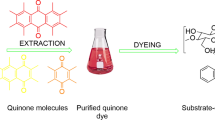Abstract
An analytical protocol based on optical microscopy (OM), scanning electron microscopy (SEM) observation, energy-dispersive X-ray (EDX) analyses, analytical pyrolysis in the presence of hexamethyldisilazane followed by gas chromatographic/mass spectrometric analysis (Py-silylation-GC/MS) and gas chromatography/mass spectrometry (GC/MS) after alkaline hydrolysis, solvent extraction and trimethylsilylation was used to study the origin and nature of black pigments from the carved inscriptions of several panels of two alabaster tombs dated from the mid-sixteenth century. Optical microscopy and SEM observation showed the presence of an amorphous very dark-brown substance, from translucent to opaque. EDX analyses revealed that the samples were mainly made up of C and O, thus highlighting the organic nature of the material used in the inscriptions. Py-silylation-GC/MS and GC/MS analyses provided detailed molecular compositions, highlighting the presence of a wide range of compound classes including diterpenoid acids, tricyclic abietanes, mid- and long-chain monocarboxylic fatty acids, n-alkanols and n-alkanes. The pyrograms, the chromatographic profiles and the presence of characteristic biomarkers indicated that a mixture of pine pitch and beeswax had been used to make the black inscriptions.

Chemical characterization of Renaissance black pigments





Similar content being viewed by others
References
Berrie BH (ed) (2007) Artists’ pigments, vol. 4. National Gallery of Art, Washington
Andreotti A, Bonaduce I, Colombini MP, Modugno F, Ribechini E (2009) Internat J Mass Spectrom 284:123–130
Shedrinsky A, Baer NS (1995) In: Wampler TP (ed) Applied pyrolysis handbook. Marcel Dekker, New York
Bonaduce I, Colombini MP (2003) Rapid Commun Mass Spectrom 17:2523–2527
Bonaduce I, Colombini MP (2004) J Chromatogr A 1028:297–306
Fatás G (2008) In: Guía Histórico-Artística de Zaragoza. Ayuntamiento de Zaragoza, Zaragoza. pp. 416–417
Beltrán M, Paz J (coord.) (2003) Museo de Zaragoza: Guía. Gobierno de Aragon, Zaragoza
Ypas J (1789) Canónigos de La Seo de Zaragoza, ms., inscription 349, p. 92
Serrano ME (1997) Historia de Zaragoza, Zaragoza con los Austrias mayores (siglo XVI). Ayuntamiento de Zaragoza, Zaragoza, pp 42–50
Alvaro MI, Borrás G (coord.) (1993) La escultura del renacimiento en Aragón. Ibercaja, Zaragoza. p. 83
Marton Fr. LB (1737) Origen y antigüedades de el subterraneo... Juan Malo, Zaragoza. p. 730
Latassa y Ortin F (1884) Biblioteca antigua y moderna de escritores aragoneses. Calixto Ariño, Zaragoza
Modugno F, Ribechini E, Colombini MP (2006) J Chromatogr A 1134:298–304
Ribechini E, Modugno F, Colombini MP, Evershed RP (2008) J Chromatogr A 1183:158–169
Ribechini E, Orsini S, Silvano F, Colombini MP (2009) Anal Chim Acta 638:79–87
Colombini MP, Modugno F, Ribechini E (2005) J Mass Spectrom 40:675–687
Acknowledgements
J. Pérez-Arantegui would like to acknowledge the Spanish Ministries of ‘Education and Science’ and ‘Science and Innovation’ (Subprograma de estancias de movilidad de profesores e investigadores: PR2007-0506 and PR2008-0362). E. Ribechini and M. P. Colombini would like to thank Italian MIUR (project PRIN 2007) for the financial support. Thanks to M. Beltrán, M. L. González and J. Paz from the Museum of Zaragoza for providing samples.
Author information
Authors and Affiliations
Corresponding author
Rights and permissions
About this article
Cite this article
Pérez-Arantegui, J., Ribechini, E., Pardos, C. et al. Chemical investigation on black pigments in the carved decoration of sixteenth century alabaster tombs from Zaragoza (Spain). Anal Bioanal Chem 395, 2191–2197 (2009). https://doi.org/10.1007/s00216-009-2977-4
Received:
Revised:
Accepted:
Published:
Issue Date:
DOI: https://doi.org/10.1007/s00216-009-2977-4




